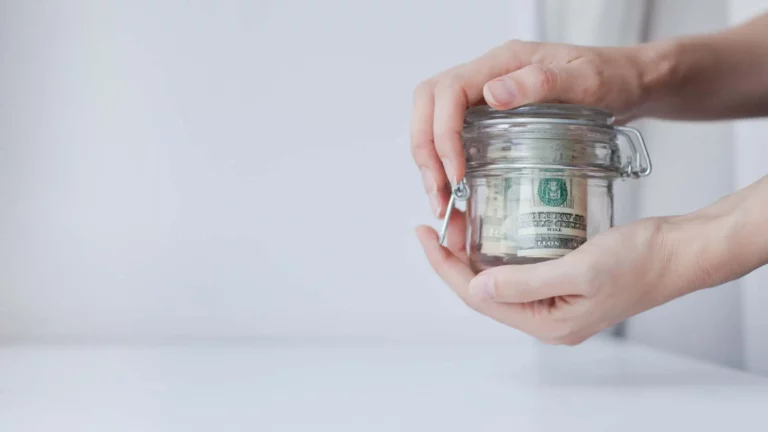Table of Contents
Water is one of those invisible costs that are steady, necessary, and easy to ignore until the bill jumps. However, what most households don’t realize is that up to 30% of their monthly water bill is attributed to small inefficiencies, both mechanical and behavioral.
The secret to lowering your bill isn’t about restriction or sacrifice. It’s about designing a system, through smarter fixtures and simple habit loops, that helps you save without even noticing.
This is your guide to lowering your water costs, drop by drop, by making both your home and your habits work more efficiently.
The Hidden Leaks in Your Water Bill
It’s easy to assume water waste only happens when there’s a dripping tap or a running hose. In reality, the biggest leaks are often invisible.
Where the waste really happens:
- Leaky toilets: A single running toilet can waste 200–300 gallons a day, enough to fill a small pool each month.
- Old fixtures: Pre-1994 showerheads and faucets can use 2–3 times the water that modern models do.
- Inefficient habits: Taking long showers, running water while washing dishes, or doing frequent small laundry loads can quietly double your monthly usage.
When you understand where the water is escaping, fixing it becomes less about guilt and more about precision.
Read related blog: How to Save Money on Your Water Bill?
Audit Your Water Footprint
Before making any changes, determine your baseline.
How to run a mini water audit:
- Check your bill – Look for “gallons used” or “CCF” (hundred cubic feet) over time. Compare to national averages:
- 2-person home: 3,000–5,000 gallons/month
- 4-person home: 6,000–10,000 gallons/month
- 2-person home: 3,000–5,000 gallons/month
- Test for silent leaks – Put a few drops of food coloring in your toilet tank. If color appears in the bowl without flushing, it’s leaking.
- Read your meter before bed – Don’t use water overnight, then check it again in the morning. If it moves, you have an unseen leak.
These small tests provide you with data and clarity, which is the first step toward control.
Smart Fixtures That Pay for Themselves
You don’t need to overhaul your plumbing to make a difference. Upgrading just a few key fixtures can reduce your water use by up to 40%.
1. Low-Flow Showerheads
Modern models use about 1.5 gallons per minute (GPM) compared to older 2.5 GPM versions. That’s roughly 7,000 gallons saved per person per year — and most users barely notice the pressure difference.
2. Faucet Aerators
These tiny add-ons mix air with water, maintaining pressure while cutting flow by up to 50%. They cost under $5 and can be installed in minutes.
3. Dual-Flush Toilets
Older toilets use 3–5 gallons per flush. Dual-flush systems enable you to select between half and full flushes, resulting in water savings of up to 15,000 gallons per year in a typical household.
4. Water-Saving Appliances
Dishwashers and washing machines built after 2015 are 30–50% more efficient than older models. Check for ENERGY STAR or WaterSense labels when replacing appliances.
Beem Tip: Track fixture upgrades through Beem’s BFF Budget Planner. You’ll see when each investment starts paying back through smaller utility bills.
The Habit Loop Hack
Most water waste isn’t mechanical. It’s behavioral. The good news? Human habits are programmable.
Cue → Routine → Reward
This loop, popularized by behavioral psychology, explains how habits form — and it works just as well for saving water.
Example:
- Cue: You brush your teeth.
- Routine: You turn off the tap while brushing.
- Reward: You feel responsible, and you save approximately 2–3 gallons of water daily.
Repeat that daily, and it sticks.
Other simple loops:
- While shampooing → Turn off the shower → Resume rinse.
- Waiting for water to heat → Collect it in a bucket → Use for plants.
- Loading laundry → Wait until full → Reward yourself with one fewer chore this week.
You’re not forcing change; you’re automating awareness.
The 1-Minute Rule for Showers
The average shower lasts between 8 and 10 minutes. Cutting it by just one minute saves 2.5 gallons every single time.
A family of four saving one minute each per day = 3,600+ gallons annually. That’s nearly $50 off your water bill, without any noticeable sacrifice.
To make it stick:
- Play a 7-minute playlist. When it ends, so does your shower.
- Use a shower timer or sandglass (many eco stores sell them for under $10).
Efficiency can feel rhythmic, not restrictive.
Greywater Mindset: Reuse the Unseen
“Greywater” refers to lightly used water from sinks, showers, or washing machines that can be repurposed.
Practical greywater habits:
- Reuse pasta water to water plants once it has cooled.
- Place a basin in your sink to collect rinse water for cleaning.
- Install a simple diverter hose from your washing machine to the garden (if your detergent is eco-safe).
Even small greywater use can reduce outdoor water needs by 20–30%.
Read related blog: Utility Bill Optimization: Top 10 Seasonal Switches That Stick
Outdoor Efficiency Without Losing Green
Lawns and gardens are the thirstiest part of most households. However, smarter timing and tools can significantly reduce that cost.
Outdoor saving checklist:
- Water early in the morning or late in the evening to reduce evaporation.
- Switch to drip irrigation instead of sprinklers.
- Use native or drought-tolerant plants that thrive on minimal water.
- Mulch garden beds. It retains moisture and prevents weed growth.
If you live in a dry climate, even replacing part of your lawn with low-water landscaping, known as “xeriscaping,” can save thousands of gallons each season.
Seasonal Water Awareness
Your water use changes with the weather, but your habits often don’t.
In summer:
- Check for leaky outdoor taps or hoses.
- Use a broom instead of a hose for driveways or patios.
In winter:
- Insulate pipes to prevent bursts.
- Drain sprinklers and hoses before freezes.
Seasonal awareness prevents waste before it starts.
Track and Celebrate Your Progress
The real win isn’t just saving money; it’s seeing your efforts work in real time.
Beem makes this effortless:
- Use the Budget Planner to tag utility payments and visualize your month-over-month usage trends.
- Create a “Water Efficiency Goal” and watch the savings compound.
- Set reminders for fixture maintenance or leak checks.
Every few months, compare your bill against your old baseline. Seeing a 15–20% drop becomes a tangible motivator, and that’s what keeps the loop going.
Read related blog: How to Protect Your Savings From Inflation
The Ripple Effect: Why It’s Bigger Than Your Bill
Lowering your water bill isn’t just a financial decision; it’s an act of environmental stewardship. Each gallon you save reduces strain on your city’s infrastructure, cuts carbon emissions from water treatment, and builds habits that extend into every part of your financial life.
You become more mindful, not just of your utilities, but of how daily actions create long-term impact. Saving water becomes a mindset, not a chore.
The Myth of Small Changes
Many people dismiss micro-habits, such as turning off the faucet mid-brush or saving rinse water, assuming they’re too small to matter. But here’s the reality: consistency compounds.
Consider this: turning off the tap while brushing can save approximately 2 gallons of water per person per day. That’s over 700 gallons a year per person or 2,800 gallons for a family of four.
It’s not about being perfect. It’s about being persistent. The cumulative effect of small, consistent actions can outweigh even one significant upgrade and its associated cost. Zero.
This is what Beem calls “compound conservation”: small, repeated actions tracked over time that translate into visible financial and environmental returns.
The Water-Time Paradox: Where Minutes Equal Money
Here’s an overlooked truth: saving water saves time. Shorter showers, full laundry loads, and fewer dishwashing cycles don’t just trim your utility bill; they reclaim hours every month. A family that cuts down one shower per day by three minutes saves nearly 7 hours a month of total water use time. That’s almost a full workday gained back.
When you connect savings not just to money, but to time, conservation stops feeling like a sacrifice. It starts feeling like freedom with more time for breakfast, a walk, or rest.
Use Beem’s Budget Planner not just as a financial tracker but as a life tracker: your money and time reflect the same principle, efficiency without compromise.
Read related blog: How Banks Profit from Your High-Yield Savings
Practical Water-Saving Strategies and Their Real Impact
| Strategy | What to Do | Estimated Savings | Effort Level | Beem Tip |
| Smart Fixtures Upgrade | Install low-flow showerheads, dual-flush toilets, and faucet aerators | 25–40% lower water use | Medium (one-time setup) | Track fixture upgrades via Budget Planner |
| Leak Audit & Repair | Detect and fix toilet, faucet, and outdoor leaks using dye tests and meter checks | $15–$30/month | Low | Create a reminder in Beem for quarterly leak checks |
| Behavioral Habit Loops | Build daily micro-habits (shorter showers, off-tap brushing, reuse rinse water) | 10–15% savings | Low | Use Beem’s goal tracker to measure savings by habit |
| Outdoor Water Management | Use drip irrigation, mulch, and native plants | 20–50% yard water savings | Medium | Add a “Garden Savings” subgoal in Beem for seasonal monitoring |
| Greywater Reuse | Recycle water from washing, rinsing, or cooling | 10–20% reduction in utility water use | Medium (DIY setup) | Track reused volume estimates as “bonus savings” in Beem |
| Appliance Optimization | Replace old washers/dishwashers with WaterSense or ENERGY STAR models | $50–$150/year | Medium | Tag these as “One-Time Investments” in Beem to track ROI |
| Seasonal Efficiency Routines | Adjust watering, heating, and washing by weather | 5–10% annual savings | Low | Add seasonal goals (spring/fall) under “Utility Goals” |
| Nighttime Energy Cutback | Turn off routers, filters, and smart devices overnight | $5–$10/month | Low | Use Beem spending alerts to monitor overnight energy costs linked to water systems |
| Family Awareness Challenges | Make saving water a family game with goals and rewards | Variable but lasting | Low | Create a “Family Challenge Fund” in Beem tied to reduced bills |
When Conservation Meets Creativity
Sometimes the best water-saving ideas are born from creativity, not cost-cutting. Try reframing conservation as an experiment instead of an obligation.
A few ideas:
- The 5-Gallon Challenge: Once a month, try living one day using only five gallons of water per person (similar to what’s available to many communities worldwide). You’ll instantly see where the biggest inefficiencies hide.
- DIY Rain Capture: Even a small bucket placed under a balcony or roof edge can collect water for cleaning, watering plants, or caring for pets.
- Mindful Morning Ritual: Begin your day by filling a single carafe of water for brushing, rinsing, or quick cleaning. It reprograms your brain to value scarcity.
Creativity transforms sustainability into a lifestyle. It makes savings playful, personal, and long-lasting. The kind that sticks even when your bill goes down.
The Future of Water Efficiency Is Digital
Smart water meters and app-connected devices are slowly redefining home water management. They don’t just measure. They learn.
Modern smart systems like Flume or Moen Flo can:
- Send leak alerts to your phone in real time
- Show daily and hourly consumption graphs
- Automatically shuts off water when a leak is detected
Read related blog: How to Save on Your Energy Bill in Winter?
FAQs on Water Bill Savings: Fixtures and Habit Loops
What’s the fastest way to lower my water bill?
Fix leaks and install aerators. These two steps alone can save 10–15% monthly. For bonus results, reduce shower time by a minute and only run full loads of laundry. The effects compound faster than you’d expect.
Are low-flow fixtures really effective?
Yes. Modern low-flow fixtures maintain strong pressure while reducing flow volume. Most households report no difference in comfort but see measurable drops in bills within one billing cycle.
How do I track water usage accurately?
Read your water meter monthly or use your utility’s online portal. With Beem, tag each bill and visualize your spending trends to connect habits with results.
Can reusing greywater be harmful?
Only if detergents or soaps are non-biodegradable, stick to eco-safe, phosphate-free products. Greywater should only be used for non-edible plants or cleaning tasks.
How can Beem help with home efficiency goals?
Beem lets you create a dedicated fund, track recurring expenses, and visualize your savings. Over time, you’ll see your “invisible bills” shrink, turning eco-friendly habits into measurable financial wins.
From Drips to Discipline: The Beem Way
Saving on your water bill isn’t about deprivation. It’s about design. Every efficient fixture, every mindful rinse, every shortened shower adds up to something far greater than a smaller bill. It’s a home that works with you, not against you.
With Beem, you don’t have to guess what’s working. You can track, tag, and celebrate every drop of progress until conservation becomes second nature and your savings flow naturally. Download the app now!
When your habits align with your goals, even your water bill starts reflecting your smarter choices.















































